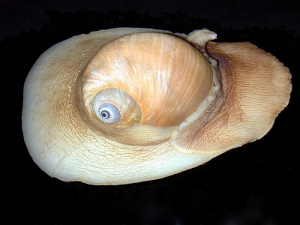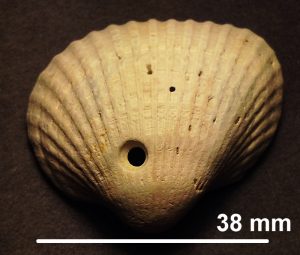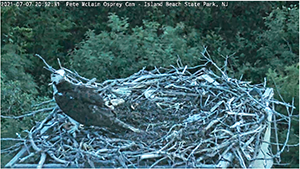This is the ninth installment of the “Science of the Shore Column" written by Bianca Charbonneau, Phd candidate. Have a science question you would like answered? Email Bianca at BCharbon@sas.upenn.edu
It’s a bird, it’s a plastic plane, no it’s a moon snail (Neverita lewisii) egg casing, also known as a sand collar.
Moon snails are univalve gastropods in the family Naticidae which is composed of predatory marine snails and mollusks with globular shells that have a half moon shaped shell opening (aperture). They live just below the surface of the sand, 10 cm or deeper.

During the day, the moon snail spends its time buried in the sand to avoid predators, like clams. However, at night the snails hunt for other mollusks, like bivalves and snails; when they find prey, they envelope it with their foot, which can be too large to fit in the shell, to suffocate it thereby forcing the bivalve to open, making its tasty meat available to the hungry snail.
They also use the foot like a plough to cover their head when moving through the intertidal sand or mud flats; when their foot is being used like this, they can easily be confused for sea slugs. If suffocation does not work, then the snails will secrete a calcium based acid onto the prey’s shell to soften it. Once the shell is softened, the snail will use its radula (toothed tongue) to bore a beveled hole into the prey’s shell. So, if you find a shell, likely a clam shell, with a nice and perfect beveled several millimeter sized hole drilled in it, then it may have been from a moon snail! Oysters also drill holes into their prey, but the hole looks different.

Moon snails reproduce sexually in the sand and the female produces eggs that will be encased in gelatin-like sand collar or coil that feels like it could be plastic, but not quite. In preparation for laying her eggs, a female moon snail will first use mucus to adhere grains of sand together around her shell in a flexible and gelatin-like curl. This curl will surround her body and looks a bit like a sculpture.
She then uses her cilia to disperse her thousands of eggs between herself and the sand collar. Once she has done this, she produces a second flexible sand and mucus layer that she will use to protect her eggs by sandwiching them between the two layers.
The egg casing is left in the sand and the female moves on to continue to eat and grow larger; most females can live up to 14 years. The eggs will hatch mid-summer into free-swimming veliger larvae; veliger larvae are planktonic larva of many kinds of sea snails and freshwater snails, including most clams. Once the eggs hatch, the sand collar becomes hard and brittle and then as a result eventually disintegrates.
You’ve definitely seen or taken home a moon snail shell if you collect shells in NJ. You have likely encountered at least one of these weird looking egg casings, whole or as a fragment, washed up on the shore and now you know what the heck they are!




